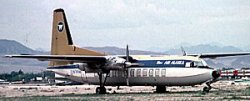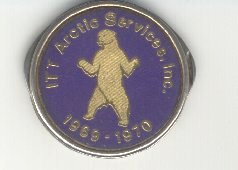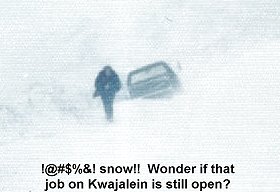 |
|
|
|
|
|
|
|
|
|
|
|
|
|
|
|
|
|
|
|
|
|
|
|
|
|
|
|
|
|
|
|
|
|
|
|
|
|
|
|
|
|
|
|
|
|
|
|
|
|
|
|
|
|
|
|
|
|
|
|
|
|
|
|
|
|
 |
| A White Alice History (as I remember it) |
|
|
|
Is this the same guy? |
|
|
|
 |
|
|
|
 |
|
|
 |
|
|
|
|
|
Home |
|
|
|
|
|
|
|
|
|
|
|
|
|
|
|
|
|
|
 |
|
|
|
|
|
|
|
1999 |
|
|
|
|
Cape Lisburne
1965 |
|
|
|
|
|
|
|
|
 |
|
|
|
|
|
|
The White Alice Communications System (WACS) was built in the mid 1950's to provide improved communications for the U.S.A.F.'s Alaskan AC&W radar stations. These radar stations had been buiIt several years earlier along Alaska's western coastline as part of America's early warning network and relied on a variety of less than adequate HF and VHF radio systems for their communications needs. The WACS provided these stations with reliable, quality telecommunications. The WACS also consolidated other government systems such as the FAA and the Alaska Communications System. White Alice is an acronym for White, as in the frozen north, and Alice for ALaska Integrated Communications & Electronics. |
|
|
|
The WACS was designed for the U.S. Air Force by the Bell System and installed by their subsidiary Western Electric Company (WECO). The original 25 stations required three years to construct with the first station becoming operational in 1956. In 1960, the WACS was extended through southeast Alaska, to Adak and Shemya in the Aleutian Islands and to Barter Island on the Dewline. Additionally, a microwave system was built from the newly constructed BMEWS site at Clear through Canada and a second microwave link was built from Fairbanks to Anchorage.
|
|
|
|
The White Alice system operated until the late 1970's, a victim of satellite technology. Even though the WACS was a military system, it was operated by civilian contractor personnel, Federal Electric, RCA Service Comany and ITT Arctic Services throughout it's twenty year lifespan. The only part of the system ever run by the Air Force were the seven Aleutian Dew stations and that was only until 1969 when the radars were shut down and the WACS contractor took over operation of the remaining communications links. |
|
|
|
Today, the surviving radar stations communicate via satellite directly with the ROCC at Elmendorf, and other locations. The AC&W sites now have minimally attended radar installed and a few maintenance people are the only ones at each site. The remote satellite communications stations are for the most part unmanned. What used to require thousands of people to accomplish is now being done with only a handful. (All the eggs in one basket?)
The White Alice sites and their antennas are now being torn down, nothing remaining but flattened mountain tops, an era, and the people that made it happen, fading into history. |
|
|
|
 |
|
|
|
|
|
At the Sites |
|
|
|
There were three types of White Alice sites: the local economy sites, the dorm sites and the AC&W sites.
At the local economy sites, you lived in the local towns and villages.
The dorm sites were a composite buildings that housed the communications station and living quarters.
At the AC&W sites, you lived with the Air Force in the barracks and commuted to the WACS station every shift. Some AC&W locations had dorm sites. |
|
|
|
The Dorm Sites |
|
|
|
The dorm sites were mostly relay stations that were generally located in the middle of nowhere. The station consisted of the commuications room, the living quarters and the power house. Life at a dorm site consisted mainly of eating, working, eating, sleeping and eating. The dorm sites were legendary for the quality of their culinary staffs and many techs had the bellies to prove it. The biggest entertainment highlight was the Saturday night movie. |
|
|
|
The AC&W Sites |
|
|
|
 |
|
|
 |
|
|
|
|
|
|
The co-located AC&W sites consisted of the WACS site, the radomes and the base camp. There were about 120 people on these sites, mostly Air Force, a few civil service people and the WACS personnel, usually a supervisor, five techs and one or two mechanic/operators. The WACS site and the radomes were normally close together on top of a mountain and the base camp was at the bottom of the mountain, usually several miles away by a treacherous road. The WACS site had no living facilities, so the WACS personnel had to live and eat with the Air Force and commute up and down the mountain to go to work. Anyone that spent a winter at one of these places can tell horror stories about traveling these roads in a white out or blizzard, getting stuck in the middle of the night or almost driving over the side of the mountain or getting stranded at the WACS site for a couple of days. A lot of credit has to be given to the dozer operators that kept these roads open and rescued stuck techs. |
|
|
|
 |
|
|
|
WHOOPS! |
|






